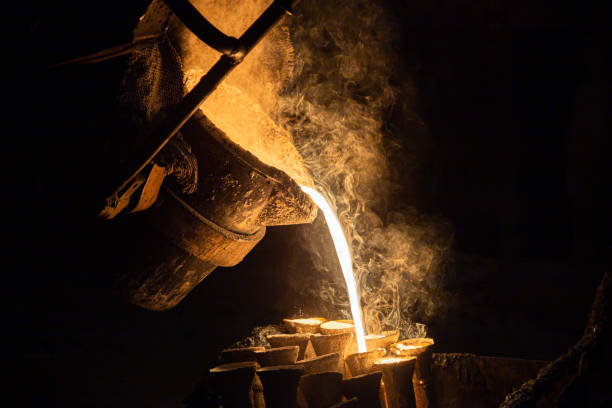Gold transformation over the past century is a testament to its resilience and adaptability in the face of global economic, political, and technological change. From its foundational role in the gold standard to becoming a free-floating commodity and a modern safe-haven asset, gold has continually evolved to meet the needs of investors and economies. Its journey through historic milestones like the Great Depression, the end of Bretton Woods, and the rise of digital trading platforms highlights its enduring value. By understanding gold’s transformation, we can glean essential lessons about its timeless role in preserving wealth and navigating uncertainty.

Gold in the Early 20th Century: The Gold Standard Era
- Stabilizing Economies:
- Gold anchored the global financial system, providing stability in currencies and trade.
- The Great Depression’s Impact:
- The rigid nature of the gold standard contributed to deflation and economic stagnation, leading to its eventual abandonment.
The Mid-20th Century: Bretton Woods and the Dollar-Gold Link
- Post-War Stability:
- The Bretton Woods system tied currencies to the U.S. dollar, which was backed by gold, fostering global economic recovery.
- The End of Bretton Woods:
- In 1971, the Nixon Shock severed the dollar’s gold convertibility, marking the beginning of gold as a free-floating asset.
The Late 20th Century: Gold’s Role in Modern Markets
- Inflation Hedge and Crisis Asset:
- During the 1970s, gold’s value soared in response to high inflation, oil crises, and geopolitical instability.
- The 2008 Financial Crisis:
- Gold solidified its reputation as a safe-haven asset, attracting investors during periods of economic turmoil.
The 21st Century: A Modern and Evolving Asset
- Digital Gold Investments:
- Innovations like gold ETFs and digital trading platforms have made gold more accessible to investors.
- Geopolitical Hedge:
- Gold remains a refuge during global conflicts and economic uncertainty, as seen during the COVID-19 pandemic and recent geopolitical crises.
- Sustainability and Technology:
- Growing focus on ethical sourcing and the rise of gold-backed cryptocurrencies demonstrate gold’s ability to adapt to modern demands.
Lessons from Gold’s Transformation
- Resilience:
- Gold’s ability to maintain value through economic cycles, wars, and systemic changes highlights its enduring appeal.
- Diversification:
- Its role as a hedge against inflation, currency devaluation, and market volatility underscores the importance of including gold in diversified portfolios.
- Innovation:
- Gold’s journey from physical bullion to digital tokens showcases its capacity to evolve alongside technological advancements.
Looking Ahead: A Timeless Asset
As gold continues to navigate a changing world, its history serves as a guide for its future. Its adaptability, coupled with its universal recognition as a store of value, ensures that gold will remain a cornerstone of wealth preservation and investment strategies for generations to come.
